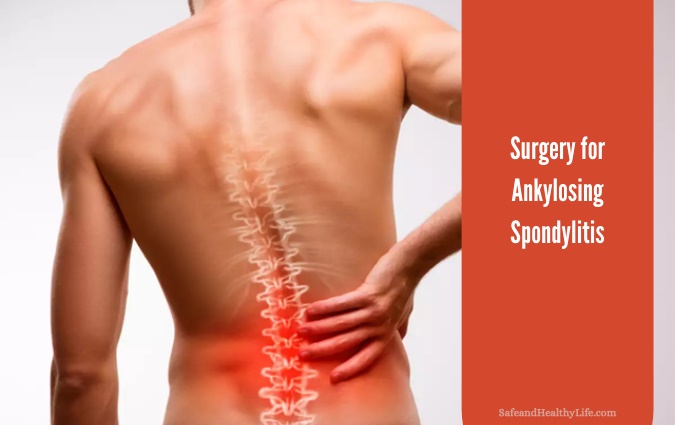Surgery for Ankylosing Spondylitis | SHL

Ankylosing spondylitis is a form of arthritis that affects the spine primarily.
Other body parts, such as the hips, knees, ribs, and shoulders, may experience inflammation, pain, and stiffness due to the condition.
Dr. Mohana Rao, who is the chief doctor at one of the leading neurology hospitals from Guntur, Andhra Pradesh recommends surgery for various reasons, including severe pain and limited mobility.
Ankylosing spondylitis (AS) is most commonly treated with a combination of medication, exercise, and complementary therapies. Some people, however, may require surgery to help with their symptoms.
This article explains when surgery for AS is required and the various types of surgery available. It also considers the advantages, disadvantages, potential complications, and financial costs of surgery.
Is it necessary to have surgery?
Ankylosing spondylitis (AS) doesn’t always necessitate surgery. In many cases, one or more of the following methods can be used to manage the condition:
Medications:
To help manage AS, a doctor may prescribe one or more of the following medications:
NSAIDs (nonsteroidal anti-inflammatory drugs): Anti-inflammatories and anti-pain medications. Related.
Corticosteroids are anti-inflammatory drugs that help to reduce inflammation.
To reduce localized inflammation, a specialist may suggest corticosteroid injections straight into the affected joints.
Biologics:
These are pharmaceuticals or treatments containing proteins or other substances derived from a natural source, such as humans, animals, or microbes.
They are a type of DMARD (disease-modifying anti-rheumatic drug) that can treat arthritic conditions.
Exercise and physiotherapy:
Stretching regularly and participating in low-impact sports can help keep the spine mobile and improve posture.
Complementary therapies:
Dr. Mohana Rao says, “People with AS may benefit from complementary therapies like acupuncture for pain relief.”
Massage for pain relief and improved circulation
Yoga can help you keep your joints flexible.
TENS (transcutaneous electrical nerve stimulation) is a pain-relieving device that uses mild electrical currents.
Signs that a person may require surgery
If a person has one or more of the following symptoms, a doctor may recommend surgical treatment for AS:
Severe pain occurs when a person’s pain is unresponsive to over-the-counter (OTC) or prescription pain relievers.
Reduced mobility:
The person’s mobility is severely impaired, lowering their quality of life. A spinal fracture has occurred, or the person is at an increased risk of developing a spinal fracture.
Spinal fusion is when two or more cervical vertebrae fuse, limiting neck and back motion.
Severe kyphosis:
The condition has resulted in severe kyphosis, a severe curvature of the upper back spine.
If a person cannot perform daily tasks, such as working or driving, a doctor may recommend surgery.
Surgical Procedures
The following are some of the surgical procedures that may be used to treat AS.
Laminectomy
A laminectomy, also known as decompression surgery, is a procedure in which part or all of a vertebra is removed to relieve pressure on the spinal cord and nerves. This can help with pain relief and mobility. A laminectomy can be done as an open or minimally invasive procedure.
Spinal osteotomy
A spinal osteotomy is a surgical procedure that entails cutting and reshaping bones to straighten the spine. The latter entails accessing the spine through small surgical incisions using specialized equipment.
People with a critical spine curvature that creates pain and limits mobility may benefit from this procedure. Depending on the location of the spinal curve and the bones that the surgeon needs to operate on, the procedure may vary.
Fusion of the spine
The fusion of two or more vertebrae is known as spinal fusion surgery. Mechanical pressure between the vertebrae or between the vertebrae and the spinal cord can cause pain, which can be relieved with this procedure.
It can also aid in the stabilization of the spine. A surgeon will use bone graft from the patient’s body or a donor to fuse the vertebrae.
The vertebrae will then be held in place with rods, wires, and screws while they fuse. A person will need to wear a back or neck brace after surgery to ensure that the bones heal in the proper position.
Replacement of the hip joint
The hip joint is removed and replaced with an artificial joint during hip joint replacement surgery. The goal of this procedure is to improve mobility in people who have had severe hip joint damage. The procedure can be done as an open surgery or as a minimally invasive procedure by a surgeon.
The advantages of surgery
The following are some of the advantages of having surgery for AS:
Pain relief: Surgery may be used to relieve severe pain caused by spinal compression, joint damage, or bone fractures.
Increased mobility: Surgery can aid in the improvement of joint range of motion.
Improved posture: After surgery, a person may discover that they can sit or stand with a straight back or maneuver themselves into previously impossible positions.
Spinal stability: Some surgeries may aid in spine stabilization.
Complications and risks
The following are some of the possible dangers and difficulties linked with spinal surgery:
- infection at the incision place
- harm to blood capillaries
- allergic reactions
- blood clots
- nerve damage
- scarring
- spinal fractures
Notwithstanding the high frequency of difficulties, Dr. Mohana Rao says that long-term outcomes following spinal surgery are usually positive.
About The Author:
Murshid Paravath is a passionate health blogger. Enjoys writing about all of the health-related issues that affect various parts of the body and addressing her readers about the care that needs to be taken in today’s world.

